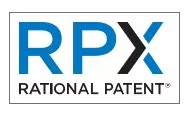- within Intellectual Property, Litigation and Mediation & Arbitration topic(s)
Last month, Acting USPTO Director Coke Morgan Stewart rescinded a memorandum introduced by her predecessor, Kathi Vidal, that had limited the circumstances in which the Patent Trial and Appeal Board (PTAB) could discretionarily deny institution under the NHK-Fintiv rule. Now, the USPTO has taken two more notable steps on discretionary denials: On March 24, PTAB Chief Administrative Patent Judge (APJ) Scott Boalick issued a memorandum that explicitly repudiates the key points from the rescinded 2022 guidance; and on March 26, Stewart released another memorandum that creates a bifurcated institution process for America Invents Act (AIA) reviews. Now, the USPTO director is to decide all requests for discretionary denial, and only after the director rejects such a request may a PTAB panel then address the merits and non-discretionary factors. Significantly, the memorandum indicates that in addition to the factors established by PTAB precedent, the director will consider the PTAB's workload in deciding whether to discretionarily deny institution.
Under the NHK-Fintiv rule, the PTAB can tie institution to a variety of factors based on certain aspects of a district court case asserting the same patent. The rule has long been a point of contention for frequent defendants, especially the NHK-Fintiv factor allowing the Board to deny institution when its final written decision (FWD) deadline would fall too close to the scheduled trial date in a parallel district court case. Given the popularity of venues, like the Western District of Texas, that schedule trials as early as possible, this forces petitioners to file earlier than they might otherwise—essentially, further compressing the one-year window within which defendants may file an inter partes review (IPR). A group of companies that have challenged the rule's implementation in court—Apple, Cisco, Google, and Intel, later joined by Edwards Biosciences—have argued that the rule "has dramatically reduced the availability of IPR, regardless of the weakness of the patent claims being challenged, thereby undermining IPR's central role in protecting a strong patent system". (That case is currently on appeal before the Federal Circuit for the second time, now limited to the defendants' argument that the rule is invalid for having been implemented without notice-and-comment rulemaking as required by the Administrative Procedure Act (APA).)
Vidal's June 2022 guidance placed certain notable limits on the PTAB's implementation of NHK-Fintiv. Perhaps most significantly, the guidance essentially exempted AIA reviews that are especially likely to succeed, explaining that the Board should not discretionarily deny petitions that present "compelling, meritorious challenges": "those in which the evidence, if unrebutted in trial, would plainly lead to a conclusion that one or more claims are unpatentable by a preponderance of the evidence". The guidance also established that the NHK-Fintiv factors apply only to district court litigation and not to International Trade Commission (ITC) proceedings, explaining that this was because the ITC cannot "conclusively" resolve a validity claim, since "[u]nlike district courts, the ITC lacks authority to invalidate a patent and its invalidity rulings are not binding on either the Office or a district court". In addition, the guidance provided that the PTAB will not discretionarily deny a petition "where a petitioner stipulates not to pursue in a parallel district court proceeding the same grounds as in the petition or any grounds that could have reasonably been raised in the petition"—formalizing a practice that the PTAB had adopted in the wake of the PTAB's December 2020 precedential decision in Sotera Wireless v. Masimo, which allowed such a stipulation (commonly called a "Sotera stipulation"). Finally, the guidance limited the impact of the factor contemplating time to trial, stating that this alone cannot tip the scales toward denial under NHK-Fintiv when the other factors are neutral. The guidance further clarified that this determination must be made based on aggregate data, including the district's median time to trial and other factors including the judge's caseload and the "speed and availability of other case dispositions".
Discretionary denials fell significantly in the immediate aftermath of the guidance's issuance, but then partially rebounded (see, e.g., here) in the wake of a February 2023 precedential ruling issued by Vidal under her post-Arthrex director review power that limited the "compelling merits" exception: In CommScope v. Dali Wireless, Vidal held sua sponte (i.e., on her own initiative, without the request of either party) that the "compelling merits" determination cannot serve as a substitute for the NHK-Fintiv test. Rather, Vidal clarified that PTAB panels must first apply the five NHK-Fintiv factors and may only address compelling merits if the other factors favor discretionary denial, underscoring that if the five factors do not support discretionary denial, the panel may not assess compelling merits.
However, the USPTO returned the PTAB to the prior status quo with its February 28 announcement that it had withdrawn the 2022 guidance and all decisions relying upon it, stating that parties should instead refer back to the PTAB's precedential decisions in Apple v. Fintiv (the underlying decision, designated as precedential in 2020, that memorialized the five NHK-Fintiv factors, building on NHK Spring v. Intri-Plex Technologies, designated in 2019) and Sotera Wireless v. Masimo (discussed above).
On March 24, APJ Boalick issued a memorandum giving guidance on that rescission, explaining that the withdrawal of the 2022 guidance was effective for all proceedings in which the PTAB had yet to issue institution decisions, or those where a request for rehearing or director review was pending. The memo further addressed the key points from the 2022 guidance, in each instance expressing essentially the opposite view. For instance, it established that the PTAB will apply the Fintiv factors where there is a parallel ITC proceeding, explaining that while the Commission's validity determinations are not preclusive it is nonetheless "difficult as a practical matter to assert patent claims that the ITC has determined are invalid". Similar to the PTAB's now-current approach to district court cases, the memo establishes that where the ITC sets a target date for the full Commission's final determination that falls before the PTAB's FWD deadline, the Board is "more likely to deny institution".
Additionally, the memo makes Sotera stipulations (which, as noted above, involve the petitioner agreeing not to pursue invalidity grounds in a district court case that it raised or could have raised before the PTAB) less powerful, finding that such a stipulation is "highly relevant, but will not be dispositive by itself". Moreover, the memo loosens the approach to quantifying time to trial, stating that the Board "may consider any evidence that the parties make of record that bears on the proximity of the district court's trial date or the ITC's final determination target date, including median time-to-trial statistics for civil actions in the district court in which the parallel litigation resides". Finally, the memo underscored that "compelling merits" alone cannot be "dispositive" in the discretionary denial inquiry, providing instead that the merits are just one of the factors to be considered in a "balanced assessment".
Then came Stewart's March 26 memorandum, which is telling titled "Interim Processes for PTAB Workload Management" and creates a two-stage institution process: First, the USPTO director is to make a determination as to the discretionary denial factors, doing so in consultation with three PTAB APJs, and will then issue a decision explaining the reasons why discretionary denial is appropriate or inappropriate. If the latter, the director will then refer the case to a standard three-member PTAB panel that will then make an institution decision that addresses the merits and other non-discretionary statutory considerations. The memo also establishes the process for this new system, wherein the patent owner must file a brief containing its discretionary denial arguments within two months of the petition's assigned Notice of Filing Date Accorded, with the petitioner getting one month to respond.
The memo further establishes that the director will make her discretionary denial determination based in part on the considerations provided by applicable precedent, including Fintiv; General Plastics, which lays out factors under which multiple petitions from the same petitioner can be discretionarily denied; and Advanced Bionics, which covers discretionary denials where the USPTO has previously considered the asserted prior art or arguments. The memo recites those considerations as follows:
- Whether the PTAB or another forum has already adjudicated the validity or patentability of the challenged patent claims;
- Whether there have been changes in the law or new judicial precedent issued since issuance of the claims that may affect patentability;
- The strength of the unpatentability challenge;
- The extent of the petition's reliance on expert testimony;
- Settled expectations of the parties, such as the length of time the claims have been in force;
- Compelling economic, public health, or national security interests; and
- Any other considerations bearing on the Director's discretion.
The memo additionally notes that the director "will also consider the ability of the PTAB to comply with pendency goals for ex parte appeals, its statutory deadlines for AIA proceedings, and other workload needs".
That last consideration—echoed in the reference in the memo's title to workload management—is of particular importance given the sweeping staffing changes being enacted across the federal government by the administration of President Donald Trump. Among those changes is a January 20 executive order directing all departments and agency heads to end policies allowing remote work, which covers PTAB APJs: The USPTO has ordered all APJs who live within 50 miles of an office to come work in person starting February 10, potentially inducing some of those impacted to resign, with those living farther to come back to the office at a later date. (In contrast, patent examiners, who unlike the APJs are unionized, have a collective bargaining agreement that protects remote work, and have not yet been impacted by that directive.) Additionally, the administration has encouraged voluntary resignations as part of efforts to reduce the federal workforce: On January 28, the Office of Personnel Management sent an email offering a "Fork in the Road" deferred resignation program allowing employees that accepted through February 12 to offer their voluntary resignation, effective on September 30, in exchange for full pay, benefits, and remote work protections. Moreover, on March 21, Chief APJ Boalick reportedly informed PTAB APJs that there would be a reduction-in-force—essentially layoffs—once those and other voluntary retirement programs expire on April 17, as a result of which the Board is "is expected to experience staff reductions".
In the meantime, the PTAB already appears to have undergone some attrition as the result of voluntary resignation programs: On March 20, Stewart gave remarks at the annual PTAB Bar Conference in which she reportedly disclosed that the PTAB's APJ staffing had fallen from a high of about 280 APJs to about 200.
It will take time for the full impact of these changes to become clear, but initial reactions from stakeholders and the media (see, e.g., here and here) have broadly predicted that the result will be a significant increase in discretionary denials, as well as an increase in uncertainty over how PTAB panels will apply the governing factors. Two of those stakeholders went even further: In a March 11 IAMarticle, Bracewell partners Christopher "Kit" Crumbley (a former PTAB Lead APJ) and Jeffrey Danley predicted that staffing reductions would lead to an increase in NPE litigation.
Stay tuned for more—including RPX's upcoming review of the first quarter, which will cover this and other notable policy developments and trends impacting patent litigation and the patent market. Also, see here for RPX coverage of President Trump's nominee for USPTO Director, Dilworth Paxson partner John A. Squires.
The content of this article is intended to provide a general guide to the subject matter. Specialist advice should be sought about your specific circumstances.


